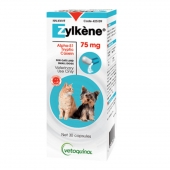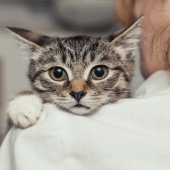Would you expect to find true love on a dating app based on good looks alone? Probably not. Yet this is how many pet owners choose a new cat or dog. Considering a pet will likely be a part of your life for the next 10, 15 or 20 years, it’s important to take into account many other aspects beyond their appearance to choose the ideal pet. Here are a few things to consider.
How does the pet’s breed match your lifestyle?
Different dog breeds were developed over centuries to demonstrate specific physical qualities or fill specialized roles, such as hunting, herding sheep and cattle, racing, sledding, entering dog shows or even guarding people and homes. This means purebreds tend to inherit some of their ancestors’ temperaments, which should match your own lifestyle.
For example, Weimaraners need a high amount of physical activity to expend their energy, making them ideal training partners. On the other hand, a pug’s short legs and snub nose (which makes them more vulnerable to respiratory problems) could make it hard for them to keep up, but they could still be a great fit for someone who simply enjoys short walks around the block.
Cat breeds show far less variance than dog breeds. A Persian cat and an American shorthair have a lot more in common than a chihuahua and a Saint Bernard do! Cat breeding focuses on achieving physical traits and a certain aesthetic, rather than filling a specific role. Some cat breeds may tend to be more aggressive, shy, active or prone to grooming, but these traits are typically less pronounced than those observed in dogs.
How would you describe your ideal pet’s personality?
Over the long term, a pet’s personality is much more important than its colour or sex. Are you looking for a young, inquisitive cat who’ll explore every corner of your house and climb on the windowsill? Will you still love them when they keep tearing toilet paper rolls to shreds? If you’re looking for a quiet cat who’ll be happy just lounging in the sun on your lap and keeping you company, have you considered rescuing an older animal?
Think about the kind of pet you’re looking for. Breeders and animal shelter staff know their animals well and should be able to find the perfect match. Ask about a potential pet’s personality traits, likes and dislikes (and in the case of a rescued animal, their history) to guide your choice.
What’s your pet budget?
Will you adopt from a breeder or a shelter? Expect to pay a few thousand dollars for a purebred with a certified pedigree, while you can rescue a stray or surrendered animal from a non-profit organization for a minimal fee. After this, on average, dog owners spend roughly $3,724 per year while cat owners spend $2,542 to cover basic pet needs. You’ll need a little extra if adopting a puppy or kitten to cover additional exams, microchipping and spaying or neutering. You can expect a large dog breed to require more food and larger doses of medication, further increasing the cost of pet care.
How much time can you commit to your pet?
Daily walks benefit all dogs, but many breeds like shepherds, border collies and Dalmatians require additional exercise and play time to avoid becoming restless. Rescued greyhounds may be more prone to separation anxiety. Long-haired cats, like Himalayans, need more frequent grooming and brushing to keep their fluffy coat free of mats and tangles. Take the time to research your potential pet’s special needs to make sure you can fit them into your schedule.





